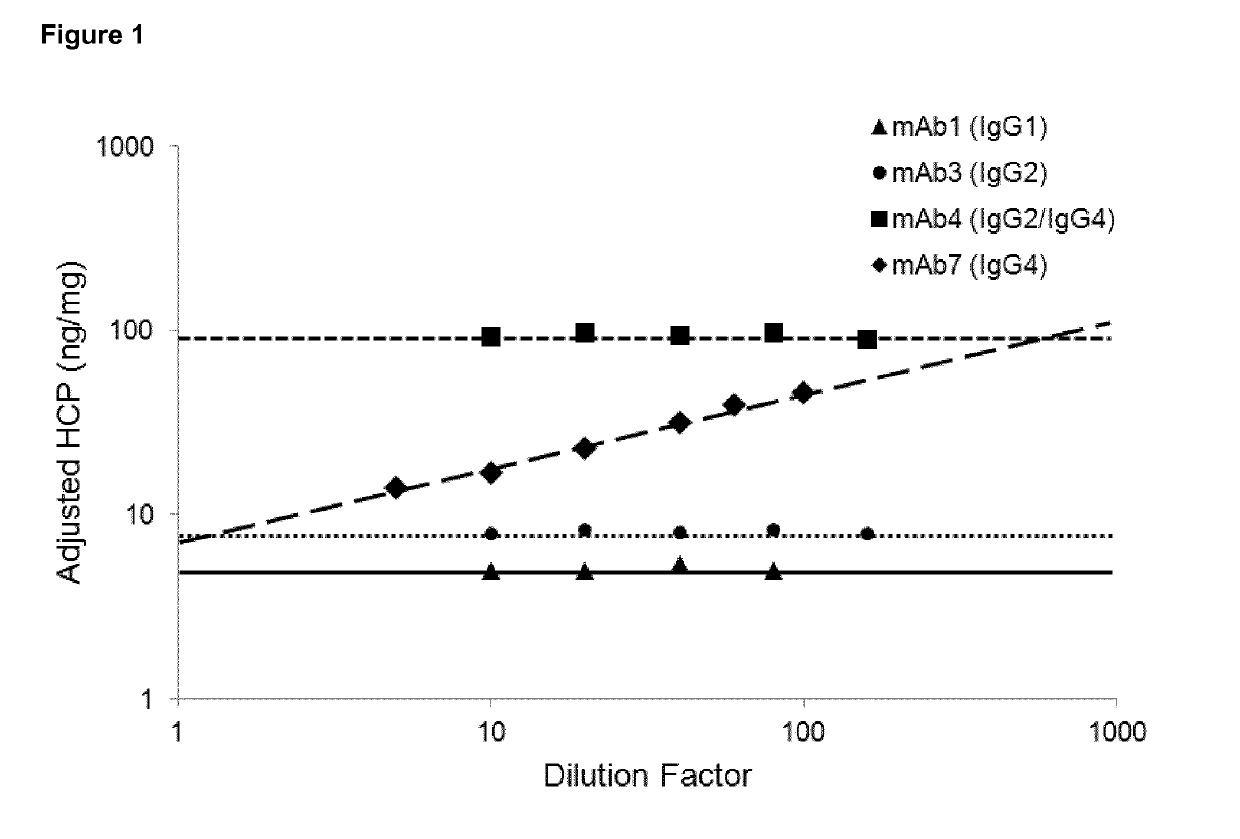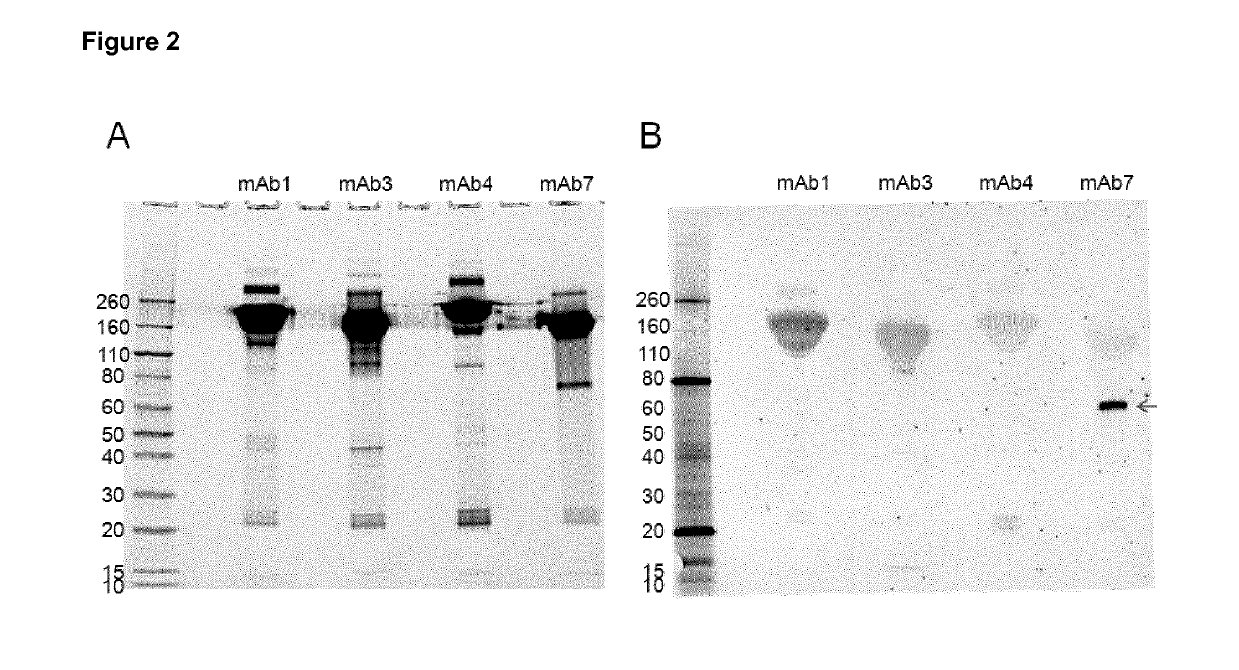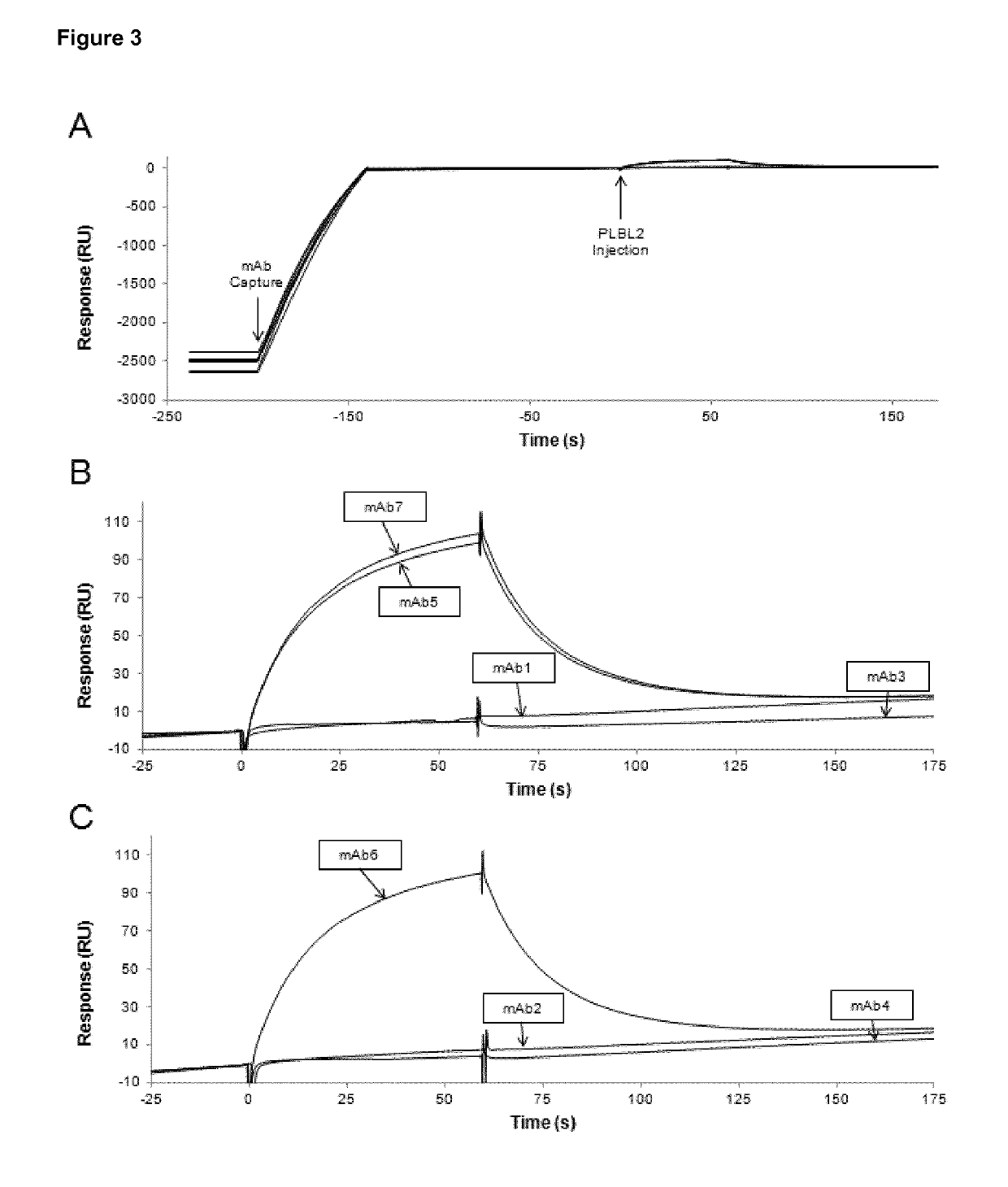Antibodies with reduced binding to process impurities
- Summary
- Abstract
- Description
- Claims
- Application Information
AI Technical Summary
Benefits of technology
Problems solved by technology
Method used
Image
Examples
example 1
Dilutional Linearity of Final Bulk mAbs
[0152]Previous studies have shown that the host cell protein (HCP) phospholipase B-like 2 (PLBL2) may be present in antibody samples which have been generated using a mammalian cell host. Furthermore, the presence of PLBL2 may cause dilutional non-linearity to be observed when quantifying total HCP levels in a sample by ELISA. In an attempt to identify mAb products that might contain PLBL2 in the Final Bulk Drug Substance, a HCP ELISA was performed to assess for dilutional linearity of the samples. A proprietary ELISA was developed in-house to quantify the total amount of immunogenic HCP in CHO-derived product samples. This HCP ELISA uses custom goat anti-CHO HCP polyclonal antibodies and an in-house produced HCP reference standard, for multi-product use across CHO-derived products at GSK, and has been used as a platform method for monitoring the clearance of HCPs across purification process samples for multiple biopharmaceutical mAb products. ...
example 2
2 Western Blot of Different mAbs
[0156]Example 1 demonstrated that mAb7 exhibits dilutional non-linearity in the HCP ELISA. In order to determine if PLBL2 might be responsible for the dilutional non-linearity, an anti-PLBL2 western blot was performed on the same humanized IgG products previously analyzed by ELISA (Example 1).
[0157]Samples containing 100 μg of mAb product were diluted 1:1 with 2× sample buffer (Novex), and then loaded into a 4-20% gradient gel (Novex). SDS-PAGE was performed under constant current at 24 mA per gel for 30 minutes, followed by 36 mA per gel for 50 minutes. After electrophoresis, the gels were fixed and the proteins were stained with SYPRO® Ruby (Thermo Fisher Scientific). Sypro® RUBY stained gels were imaged on an FLA-3000 Fluorescent Image Analyzer (Fujifilm Corp.) The Sypro® RUBY image (FIG. 2A) demonstrates equal loading of each of the products onto the gel.
[0158]Western blotting was performed by transferring gels to PVDF membranes (Bio-Rad) using XC...
example 3
ion of PLBL2 in mAb Samples
[0159]Given the detection of PLBL2 in mAb7, an ELISA was developed in order to accurately quantify the concentration of PLBL2 in the samples. This ELISA was developed in house and uses recombinant hamster PLBL2 as a reference standard, and custom in-house generated polyclonal anti-PLBL2 antibodies for detection. This assay has a sensitivity of 2.0 ng / mL. The intermediate precision for samples is 3.23% CV.
[0160]The PLBL2 ELISA was used to quantify PLBL2 concentrations in samples taken throughout the purification process for the four different mAb products previously investigated. The PLBL2 concentrations were determined after harvest, the following the first chromatography step (Step 1), and the final bulk drug substance (Final), and can be found in Table 4 below.
TABLE 4PLBL2 concentrations in mAb purification samples quantified by PLBL2ELISA.PLBL2 (ng / mg)ProductIsotypeHarvestStep 1FinalmAb1IgG13020.92.410.7mAb3IgG2xmAb4IgG2 / 4x1.27mAb7IgG41228.4600.9236.4
[0...
PUM
| Property | Measurement | Unit |
|---|---|---|
| Fraction | aaaaa | aaaaa |
| Fraction | aaaaa | aaaaa |
| Concentration | aaaaa | aaaaa |
Abstract
Description
Claims
Application Information
 Login to View More
Login to View More - R&D
- Intellectual Property
- Life Sciences
- Materials
- Tech Scout
- Unparalleled Data Quality
- Higher Quality Content
- 60% Fewer Hallucinations
Browse by: Latest US Patents, China's latest patents, Technical Efficacy Thesaurus, Application Domain, Technology Topic, Popular Technical Reports.
© 2025 PatSnap. All rights reserved.Legal|Privacy policy|Modern Slavery Act Transparency Statement|Sitemap|About US| Contact US: help@patsnap.com



